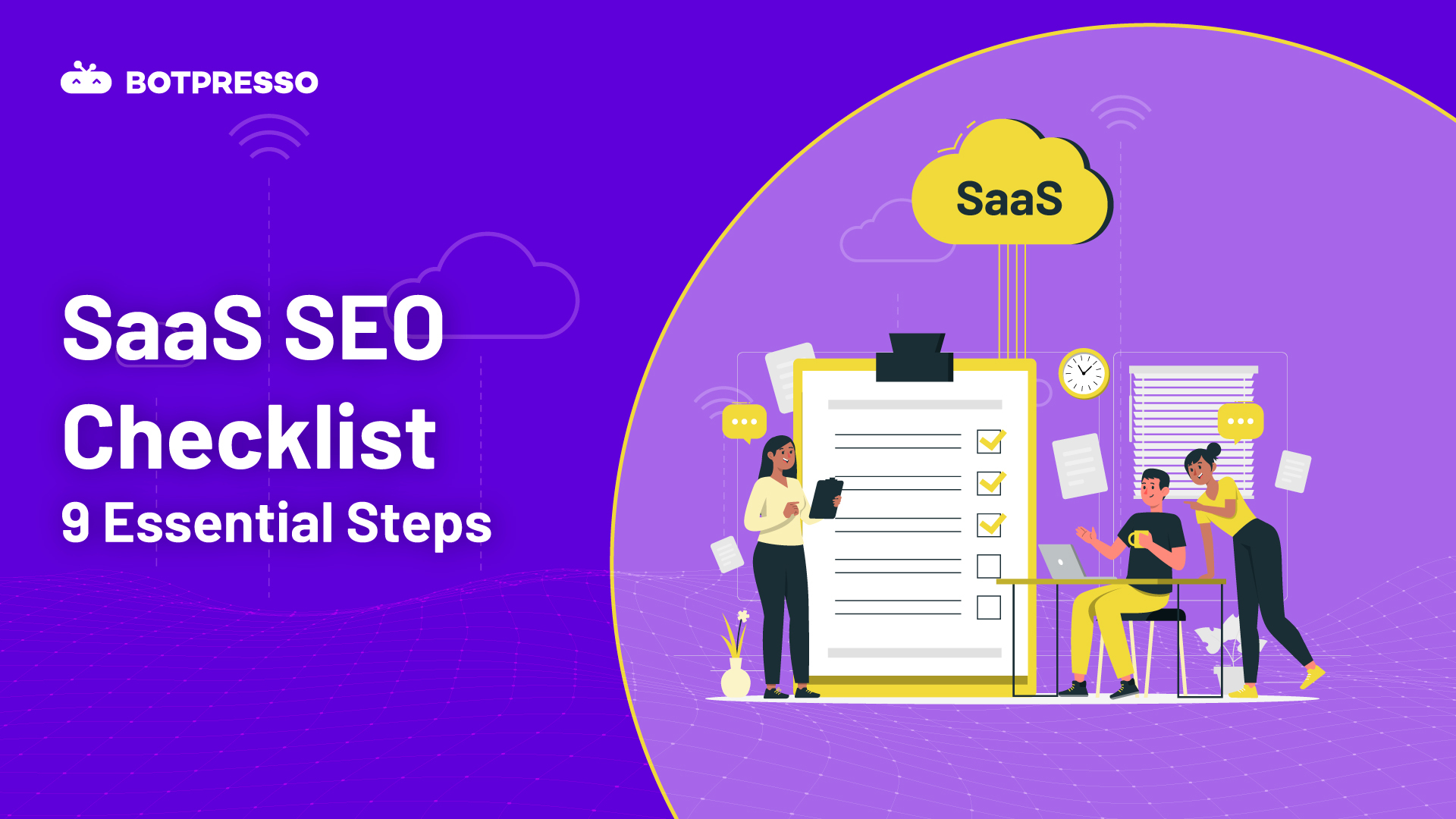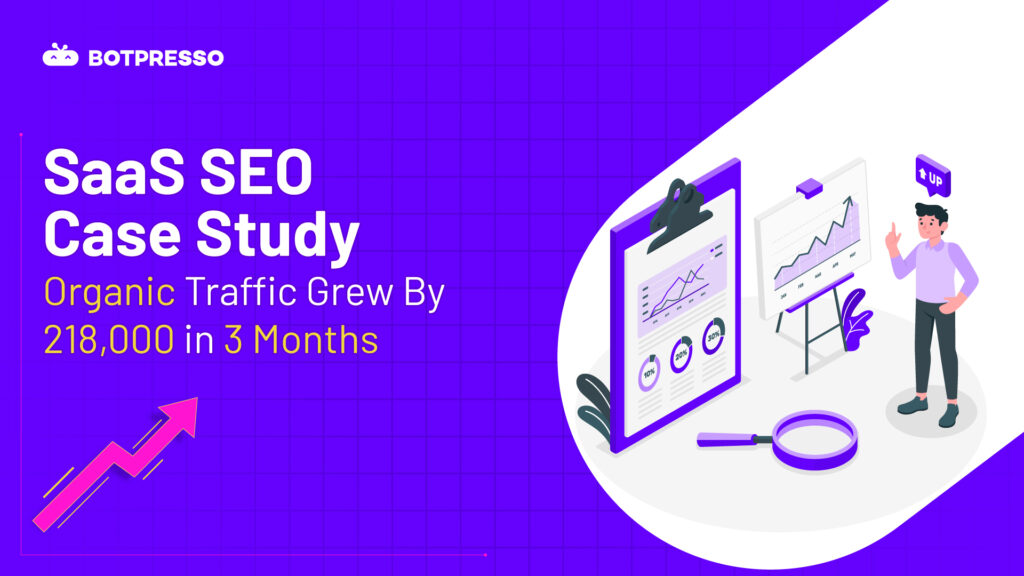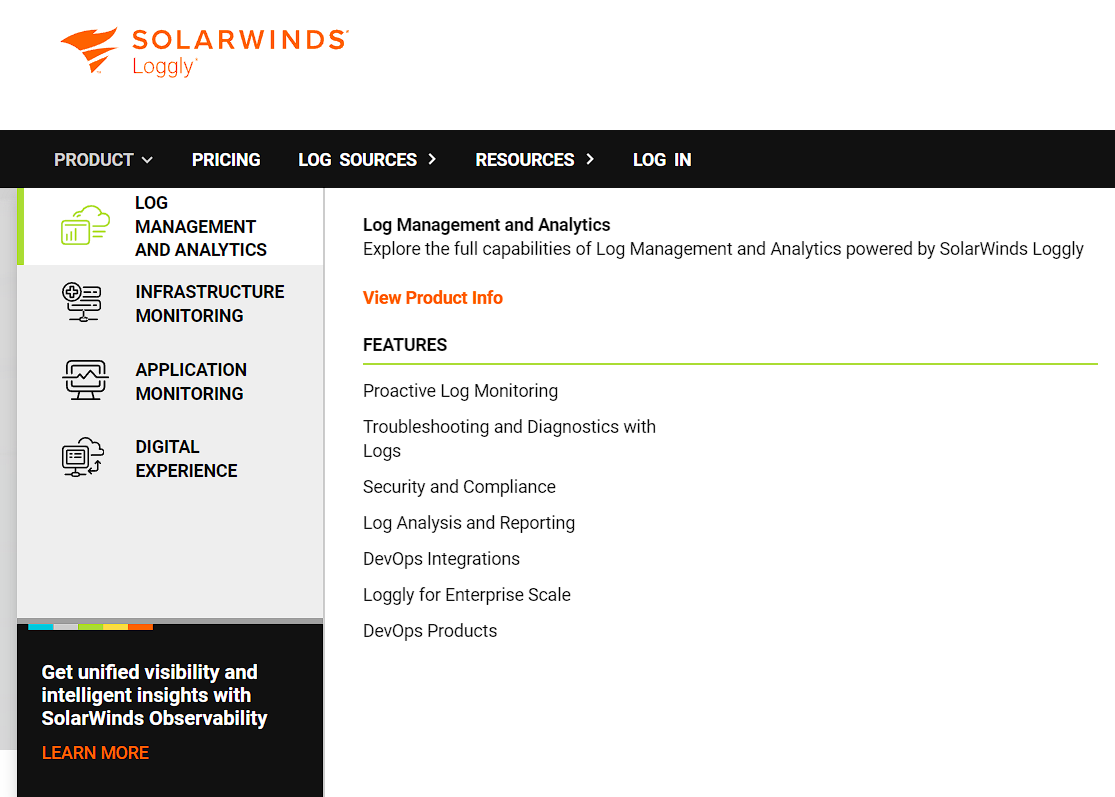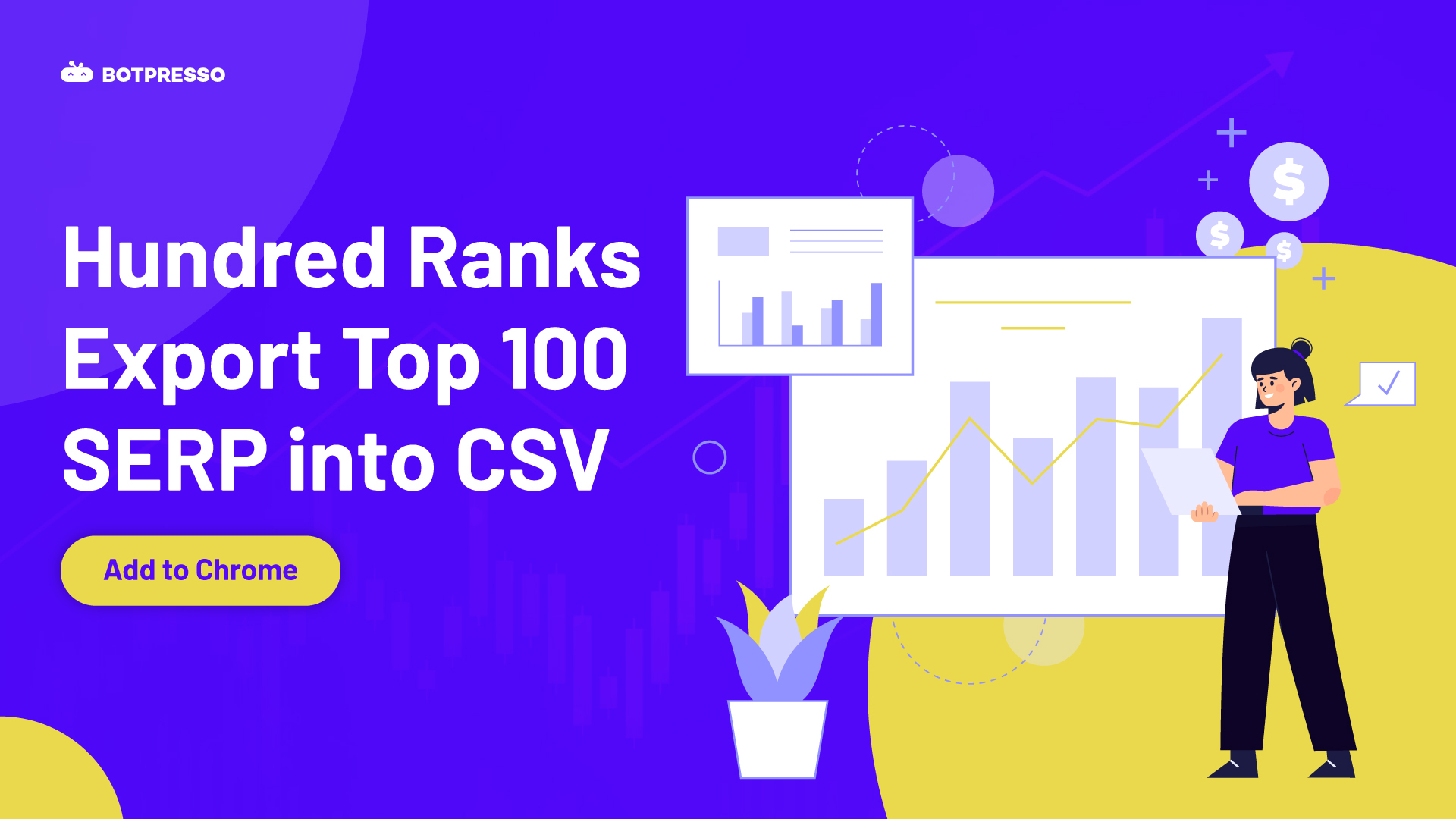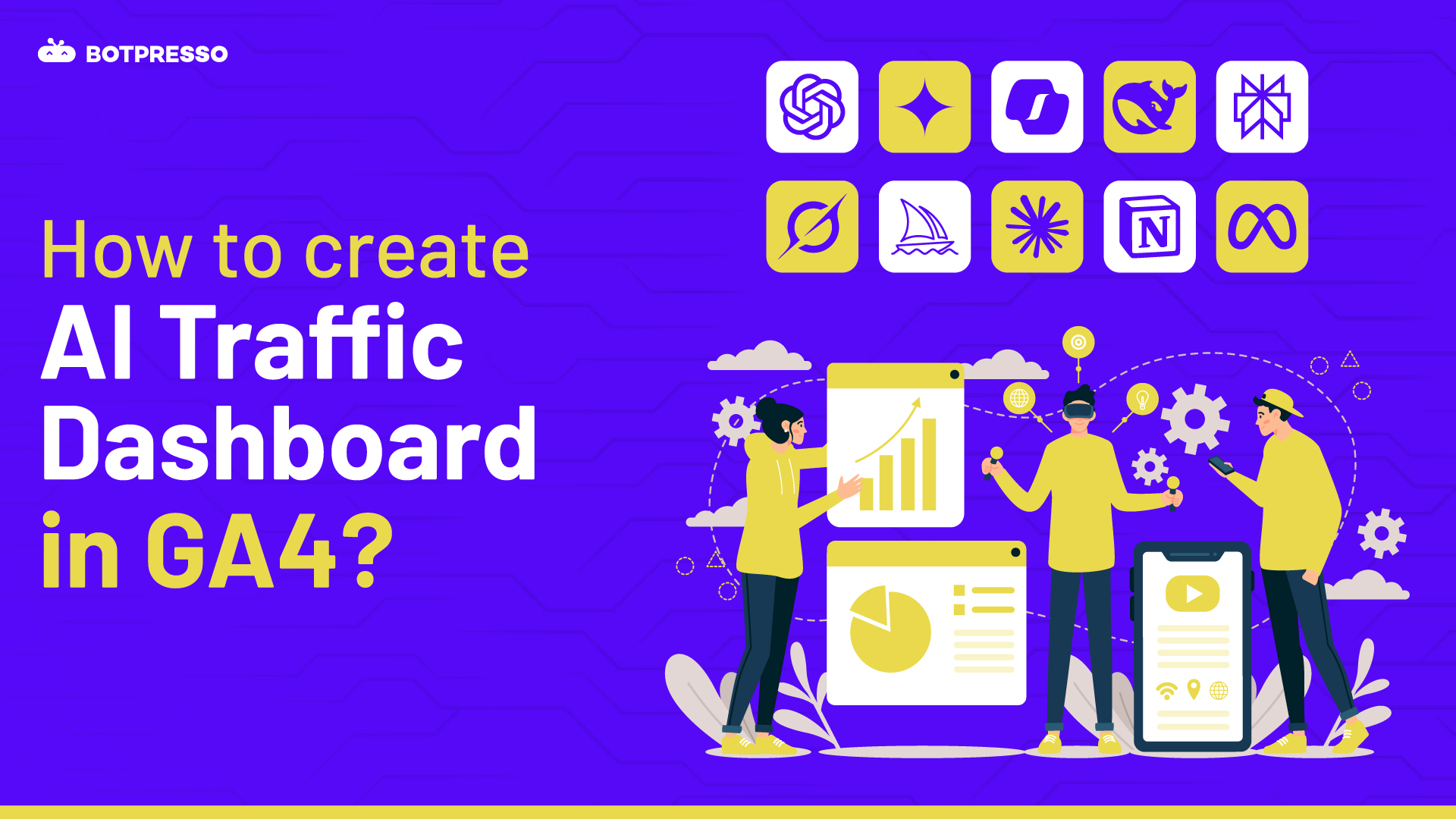SEO is one of the most sought-after channels for (software as a service) SaaS Brands that are thriving. Once you look at the SEO traffic contribution & lead generation these SaaS sites are doing it becomes evident how important SEO is for SaaS.
In this article, we cover 9 things to consider in your SaaS SEO Checklist that should propel your brand for organic traffic to your SaaS Brand.
Table of Contents
1. Start with Keyword Research
Keyword Research is the foundation of building the organic growth story for any SaaS brand. Keyword research will help you find which keywords will directly help your business find its prospective customers. It will also help you find clusters of keywords to which you don’t directly sell but can potentially cross-sell.
The overall goal of the keyword research is to find keywords for every funnel. Starting from awareness, and consideration to the decision.
Let’s take an example of an Automation SaaS Niche that is targeting keywords for these stages of the funnel
| Keyword | Funnel Stage | Elaboration |
|---|---|---|
| What is marketing automation | Awareness | This is where the user isn’t completely aware about the need for the product but is somewhat aware and is exploring how it can help |
| What is youtube automation | Awareness | |
| What is enterprise automation | Awareness | |
| Small business automation | Consideration | This is where he is exploring a solution for his specific use case |
| Lead management automation | Consideration | |
| Small business process automation | Consideration | |
| Robotic process automation case study | Consideration/Decision | After the user has consumed pages like small business automation he can be targeted with case studies to re-affirm his faith and to turn his consideration to decision |
| Accounts payable automation case study | Consideration/Decision |
This means you will target keywords with Informational, Commercial, and navigational Intent. Broadly Transactional intent wouldn’t exist in SaaS but there can be exceptions.
Informational Intent: Informational Intent is when the end user is just searching for information like let’s say color wheel and the SaaS has productivity a page that not only fulfils by sharing the information but more importantly prompts to trthem y the product.
Commercial Intent: Commercial Intent is when the user searches for a product or service with its descriptive search knowing what he wants. “Automation software” is an example of that. Here the user already knows what automation as a topic is, he is educated about that. Now he is exploring his options.
Navigational Intent: Navigational Intent is when the user has already explored his options and tried and tested them well. And now he is specifically looking for what he wants. Search terms can be “zapier automation”,”zapier google sheets automation”, or “canva ai image generator”
Let’s take Canva for example as a SaaS business. They have built different landing pages to target audiences in their user journey.
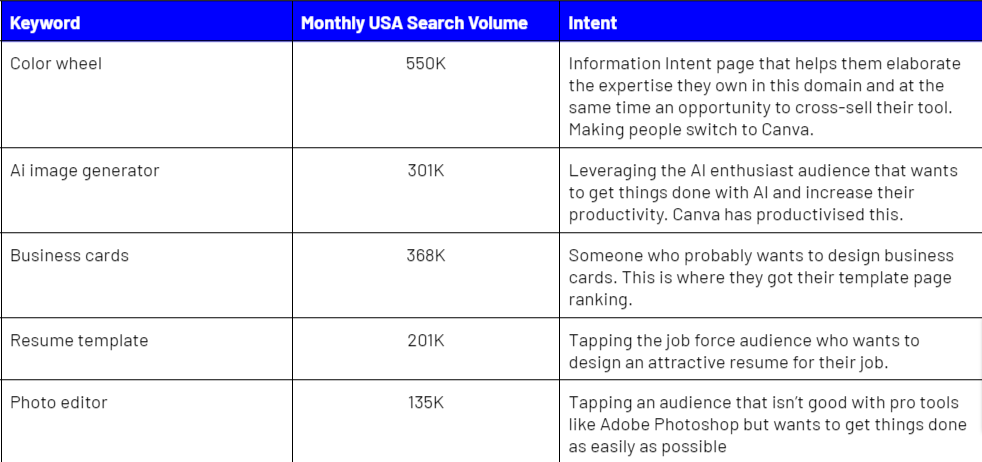
Taking a look at Canva’s top organic keywords one can easily spot how cleverly they have served different audiences’ profiles and users at different stages of the funnel.
They are educating, inspiring & converting.
2. Think About Funnels
A typical funnel is Awareness, Consideration & Decision
When you are optimizing a SaaS company website you have to think about these stages of the funnel or you can modify your funnel based on your business model.
With the help of SEO, it is possible to serve content to users at every step of the funnel.
The informational content will help you serve a user who is at the awareness stage. This is where you need to evoke the need for your product.
Using Hubspot’s inbound marketing tools you can serve content pertaining to the consideration funnel. This can be content like case studies or use cases. Users in this stage can also be served organically.
As users search for case studies.
Once the users have made the decision to buy your product offering. It doesn’t end there. Now your goal is to turn them into advocates of your brand.
Satisfied users will bring your referral business. This is where you can prompt them to bring you customers or deliver high-quality content that compels them to promote your product on social media.
3. Hygiene
Hygiene is nevertheless an important activity to do in SEO. Sites that often lose in broad core updates are the ones that have quality issues. By fixing the hygiene issues of the website you are giving Google fewer reasons to hold down your website rankings & visibility.
Fixing hygiene issues means fixing basic issues like optimizing meta tags, fixing duplicate meta tags, canonical link checks, Header Tags optimization, and much more.
4. Technical SEO Foundation
Technical SEO is a foundation that websites from every business sector need SaaS is no exception. Even in SaaS, we need to make sure that the technical SEO foundation is set up for success. This means we make sure of the following
- Crawl Hygiene – Making sure we don’t link to non-indexable pages and toast Google’s crawl budget
- Contextual Internal Linking Strategy
- Structured Data Markup Optimization
- Core Web Vitals optimization
- Using a secure HTTPS
- Clean URL Structure
- Handling of Thin & Duplicate Content
- Crawl Depth optimization
You can check our SaaS SEO Case Study where we increased this SaaS’s organic clicks by 133.4% in just 3 Months
In this SaaS SEO Case Study, you will learn how...
5. Content SEO
Content SEO is incredibly important in SaaS. In fact, research proves that SaaS with content sees 30% higher growth rates than those who don’t leverage content marketing. (source)
In a SaaS website, there are different types of landing pages tailored towards audiences of different funnel stages. An exhaustive keyword research sets the foundation for this. It will enable you to plan the landing pages, map them with keywords, map the keywords with audience & intents, and then you can plan from there.
The good part is that most of these pages would also have a primary searchable keyword for which you can rank and tap that audience.
Let’s take a look at a not-so-common SaaS example, Loggly.
Loggly is a SaaS that provides Log File Management service to its customers. They have built landing pages for specific use cases & industries that allow them to capture that market.
When we talk about content with respective SaaS landing pages we are not just talking about targeting primary & secondary keywords and trying to rank for it. More importantly, we also need to think about copywriting, and how to create a high-converting SaaS landing page.
Popular SEO Content Templates You Can Leverage
- Comparison Blog Post – (comparing your SaaS with the competitor with pros & cons)
- Ultimate Guides about the industry topic
- How-Tos
- State of {industry & Sub Industry to whom you cater}
- {product/feature} for {industry/sub industry}
- Tips
Unlike B2C E-commerce, in SaaS, the decision journey is a longer one because it’s a monthly subscription that the customer needs to agree upon. So the copywriting of the SaaS landing page has to compel the user to consider the product, testimonials are needed.
SwipeFile has brilliant examples of copywriting references for SaaS Pages
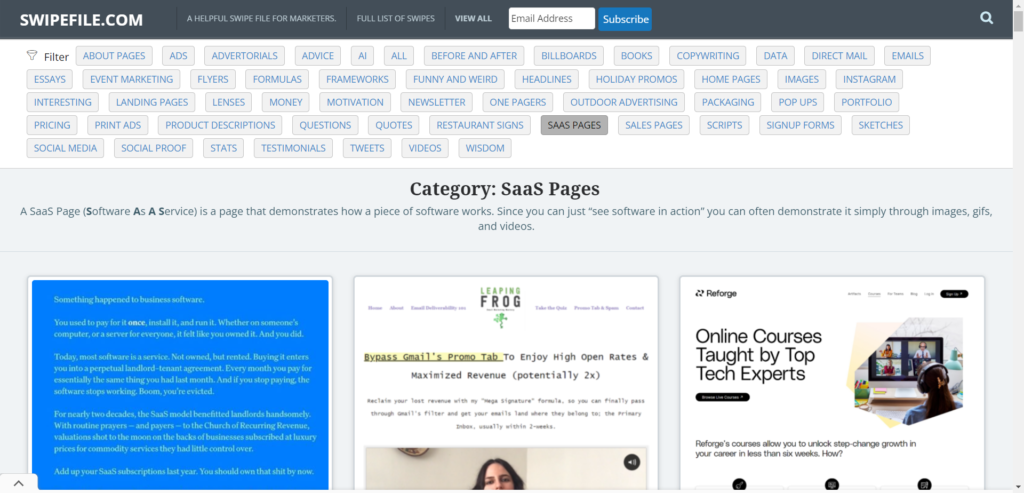
You can browse through references here to gain some inspiration.
6. Lead Magnets
Lead Magnets are a HUGE opportunity for SaaS. On one hand, you can give away a free feature of your SaaS product on the other hand Google search can lead the users there. This allows you to a) increase relevant cluster organic traffic and b) generate leads out of it.
There are several examples of this.
Keyword Insights built an amazing free tool called SERP Similarity to use you need to have an account with them. And this in turn allows them to cross-sell their main product. The good part about the SERP Similarity product is that it is a product for which there is a need in the market and yet it is a niche product that you can’t find on ads-riddled free marketplaces.
With Lead Magnets it is a HUGE win if your lead magnet page also has a search opportunity but if it doesn’t then there is no need to feel disappointed. You can always promote the lead magnet as a CTA in the top of the funnel pages, email marketing campaigns, influencer marketing initiatives, and whatnot.
7. Backlinks Matter
Backlinks are frowned upon in the industry these days. But in SaaS, they do play a critical role. There are a number of backlink-building strategies but let’s discuss the most important ones for a SaaS.
- Your SaaS Product needs to be there in blog listicles. If someone searches for let’s say Log File Analysis Tools then in the top-ranking articles your product needs to be present. In fact, Google uses this information to rank businesses directly in the SERP Knowledge Panel
- Link Magnets is another important backlink strategy for a SaaS. A SaaS business needs to showcase its expertise & authority in the domain. As a SaaS, you can think of publishing research, surveys, and Digital Assets. These are great resources that act as Link Magnet helping your backlinks organically
8. Tracking is the key
In a SaaS website, you need to track as much as possible. Every touchpoint of the user needs to be tracked. Some of the important elements are.
- Scroll Depth on SaaS Landing Pages
- Lead Generation & Lead Abandonment
- Product Signups
- Webinar Signups
- Social Shares
- Web Traffic to lead ratio
- Engaged Sessions
- Dwell Time
9. E-E-A-T
The majority of Google’s updates recently have been tailored towards E-E-A-T (Experience, Expertise, Authoritativeness, and Trust)
A SaaS company is no exception, it is important to embed the E-E-A-T signals in a SaaS Website. Here are some of the things that can be done.
- SaaS needs a lot of blog content, so it is important to get content authored by credible authors who are pros in the industry. If your SaaS is about cloud computing then it’s better to have content authored by Cloud Engineers, the DevOps Team rather than the author being a Freelance content writer.
- The About Us page is another area where these signals can be embedded via showcasing experience in the domain, the brand story, and the credentials of the founders and co-founders.
- Have a SaaS about Log Management or Cloud Computing, so why not contribute content to publications like CloudComputingNews, and HackerNoon? These communities have established themselves as a go-to source for this niche. The founder or co-founder being seen contributing content to these publications definitely makes a mark for E-E-A-T.
- Use dedicated structured data markup like Person Schema for company members to showcase their authority in the domain.
